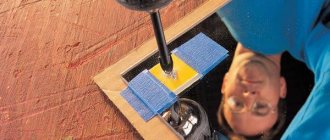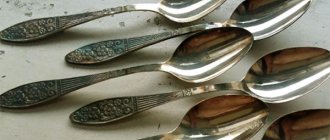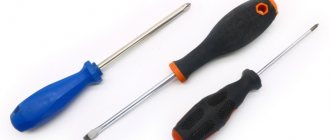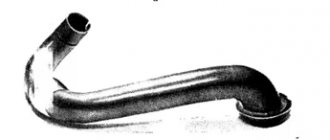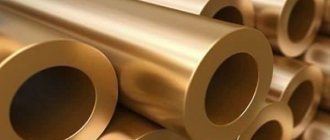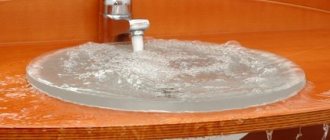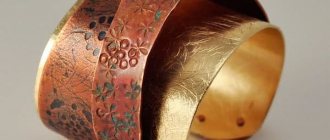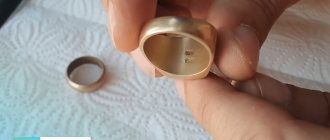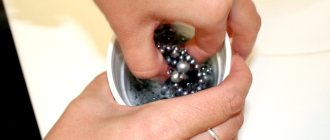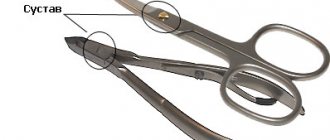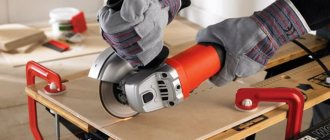Types of pollution
Collectors and people who have inherited coins are wondering how to clean them. It happens that because of the layer it is impossible to see the denomination and engraving. Plaque is also invisible to the human eye. In this case, the shine simply disappears .
This type of coin can be cleaned faster. According to its chemical properties, copper is a ductile and unstable metal . As a result of interaction with air, chemical oxidation occurs, resulting in the formation of a layer that must be cleaned.
To prevent money from losing its appearance, it must be stored correctly. Many copper specimens have been lost or deteriorated over the past centuries. Some of the treasures are still in the ground in a disappointing condition.
But numismatists and lovers of antiquities do not despair and continue to search. The resulting specimens need to be restored to their original appearance and shine in order to learn about history and share a piece of it with other generations.
The best copper coin cleaning can be done by professionals. Specialists will be able to qualitatively restore and restore the presentable appearance of the product. The procedure is expensive and not everyone can afford it.
An alternative solution is to cleanse yourself using proven products. The process at home will take longer than with professionals. And it may require re-treatment to clear the contamination.
As already noted in the article, copper is a very unstable metal in terms of its physical and chemical properties. A layer on it is formed of different colors and densities .
Pollution occurs as a result of the chemical process of oxidation. It gives such a reaction upon contact with water or air. Depending on the color, you can judge the composition.
The raid can be:
- green;
- black;
- yellow;
- red;
- blue;
- brown.
Any of these changes indicates a chemical reaction on the surface, as a result of which the metal could be damaged and deformation could occur.
How to store coins after cleaning?
To ensure that coins remain free of oxidation and do not require frequent cleaning, they must be stored properly. They should be in a dry place, protected from direct sunlight. There are several storage methods that collectors usually use:
- Special albums with plastic pockets containing coins.
- Cardboard tablets with round slots for coins.
- Glass pencil cases. In such a pencil case you can not only store, but also view valuable coins without taking them out.
Frequently touching coins exposes them to bad influences, so you need to grab them by the edge. If you still had to take them outside the field, you should immediately rinse them with warm water and dry them.
By following all the rules for cleaning and storing copper coins, you can be sure that the most valuable pieces of your collection will delight you with their appearance for a long time. Do not forget that copper is not a very hard metal and must be handled with care.
Basic cleaning methods
The procedure for removing dirt from coins is an important process during which you need to be careful and careful not to damage the item.
The layer, which has been formed for centuries, needs to be removed urgently. There is a film called patina that is highly prized by collectors . It is able to protect the metal from the external environment. Patina can be distinguished from dirt.
It is a thin, even layer that is usually brown or black in color. The deposits indicate the age of the coin and should not be removed with chemicals.
Otherwise, the value of antique lovers . Therefore, the treatment is carried out without the use of mechanical methods and aggressive compounds.
are safe :
- laundry soap and water;
- regular citric acid;
- table vinegar essence ;
- hot oil treatment
- solution ;
- ammonia;
- chemical drug Trilon-B.
All methods very effectively remove old contaminants that have accumulated over several centuries. They return the appearance close to the original without damaging the metal structure.
In any case, funds can be damaged. There is no need for haste in this case. Cleaning must be done carefully and carefully.
Effective but dangerous methods
In attempts to clean copper products from plaque and oxides at home, people are experimenting. Often the chosen methods are effective, but can damage the patina - remove it completely. As a result, the product regains its original appearance, but at the same time loses its value for antique collectors. So, before using, you should weigh all the pros and cons.
Cleaning with citric acid
An affordable and fast way to clean copper.
What you will need:
- plastic container;
- lemon acid;
- water;
- non-metallic tweezers.
Cleaning copper coins with citric acid
Procedure:
- in a bowl you need to dilute citric acid with water;
- to stir thoroughly;
- using tweezers, immerse the coin in the solution for a few seconds;
- remove and rinse with water.
Citric acid quickly corrodes all oxides, patina, and removes dirt. But you need to make sure that the coin is in the liquid for a short time, otherwise it may deteriorate irrevocably.
Paste GOI
Paste GOI
This paste contains small abrasive particles, thanks to which dirt and oxides are easily removed. Its use is justified when you need to add shine to inexpensive coins. Especially if the composition is bimetallic. For example, copper with nickel (20 kopecks, produced in 1978).
This paste will be more effective if used with a mechanical engraver with a felt tip. In this case, the revolutions should be low - 10–15 thousand per minute. The result is an absolutely clean coin, although it looks unnatural for an item with more than thirty years of history.
Soap solution and citric acid
The easiest way to clean a coin is a mixture of laundry soap and warm water. These ingredients are found in every home. In order to prepare the solution, you need to grate a bar of soap and add it to heated water.
Stir until solid particles disappear completely. Next, the coppers are placed in the bowl and left for 10-20 minutes , depending on the degree of contamination. During this time, as a result of the acid-base environment , substances will easily move away from the surface.
After soaking, you need to rinse the money under running liquid and wipe dry with a soft cloth. You can use a sponge to wash dishes. It is not recommended to use hard fabrics. This method is used to clean royal coins and items from the Soviet period .
If the recipe is not followed, or if it is left in an acid-base environment, the patina and the metal itself . All methods must be applied competently. The citric acid cleaning method is very effective, but can affect the surface structure and cause its deformation.
You must strictly adhere to the recipe. To create a solution, take 4 tablespoons of citric acid and 10 tablespoons of water. It is not recommended to add more acid, because the concentration will be more intense and can cause harm.
Money is placed in this composition for 5 minutes. For old stains, increase the time to 10 minutes. During this time, the dirt will disappear and thus will not damage the structure of the copper. Repeat if necessary.
Don't worry if a pink tint appears. In a few weeks it will disappear. Citric acid will help cope with the green coating that appears as a result of oxidation under prolonged exposure to moisture.
Cleaning Rules
To clean a silver coin with the greatest efficiency and without causing damage, you should use a few precautions:
- First of all, contaminated areas are treated with soapy water and a soft brush for cleaning teeth;
- When cleaning, do not make sudden movements and try to finish the job as quickly as possible;
- the use of products containing abrasives is prohibited;
- you need to choose the option of removing patina only after the surface of the silver coin has been completely cleaned of dirt;
- if cleaning solutions are used to clean silver, it is prohibited to allow coins to come into contact with each other;
- After cleaning the surface of the coin, it is necessary to rinse it with running warm water;
- It is prohibited to expose the product to thermal effects, as well as to place it in very cold water. Such actions can cause damage to the metal.
It is worth remembering that in cases where it is not possible to independently determine the value of a coin, but there are suspicions that its value is very high, then it is better to give it to professionals for cleaning.
Application of vinegar, soda, oil and powder
Other effective methods are cleaning copper using table vinegar essence and ammonia. The operating principles are similar, so the methods can be combined into one group.
Mostly, cleaning is carried out with a pure substance; there is no need to add liquid. Vinegar or alcohol is poured onto a sponge and the surface of the coin is gently wiped . If there are persistent dirty areas, the substance should be left on longer.
After a while, the film will come off without much difficulty. It may be necessary to wipe the areas where dirt accumulates more intensively. It is important not to use mechanical means so as not to damage the material. Only use soft cloth.
You can first soak the copper for several hours in the solution. 2 tablespoons are diluted in 1 liter of water and coins are placed . They should not touch each other or the edges of the container. Otherwise, stains may appear that will be more difficult to clean. The method is effective against yellow plaque, which indicates the presence of lead in the composition.
Once you are sure that the stains have completely disappeared, the coin should be rinsed well under warm running water. This is necessary to remove any remaining aggressive substances.
The products will allow you to restore the presentable appearance of the product, restore its shine, and completely remove plaque from copper. Just as with other products, you need to be careful not to disturb the metal surface and patina.
Otherwise , the historical value will be lost, and the coin will remain a simple metal product . To get a really good result, you need to take your time. To prevent subsequent contamination, it is important to lubricate coins with petroleum jelly.
There is a chemical powder for cleaning Trilon-B . It is used in various industries. The product will very carefully remove the film without damaging the surface.
It is necessary to dilute the substance in distilled water and add soap to reduce acidity . If the stains are not strong, then wipe the coin with the resulting solution . If heavily soiled, antiques are soaked for several hours.
Next you need to rinse and wipe the copper. After the procedure, if necessary, apply a patina. The solution has a very good effect on rusty areas.
If the copper has acquired an unnatural light shade, then it is placed in a sunny color. Within a few days, if you turn regularly, the color will be restored.
You can clean it by cooking. To do this, vegetable oil and petroleum jelly are poured into the container, and soda is added . The resulting mixture is placed on the fire and brought to a boil.
When resorting to this method, you need to be extremely careful not to get burned. Skin damage from oil is very serious and can lead to irreparable consequences. The cleaning principle is very simple.
The products are placed in a boiling composition for 5 minutes . During this time, the plaque will disappear and the product will acquire a good appearance. If the unnecessary layer has not disappeared, you can cook for a few more minutes. After washing, you need to cool and rinse with water or ethyl alcohol to degrease.
Finished items can be dried with paper towels. To do this, place towels folded in 2-3 layers , and cover with another layer on top.
It is necessary to use only soft cloths to avoid scratching the surface. You can use a drying cabinet , but not everyone has one at home. To slow down the destruction process, products can be periodically wiped with crumpled newspaper.
Unusual ways to clean copper coins
Some of the products we eat contain acid that can remove copper oxides. Also, many household products can be used to clean coins.
Cleaning with kefir
Kefir contains a small amount of acid, thanks to which it carefully cleans coins of dirt without damaging the patina.
But its use is appropriate only when the products are not too dirty, since kefir quickly deteriorates.
Soaking coins in kefir
The essence of the method:
- kefir is poured into a glass or plastic container;
- coins are dropped into the container;
- kept in kefir for at least an hour;
- taken out, washed and dried.
Everything is quite simple, cheap and effective.
Oil
For this method you will need:
- vegetable or olive;
- pot;
- non-metallic tweezers.
Boiling coins in oil
How to clean:
- pour oil into the pan - about 2-3 cm;
- put on fire;
- bring the oil to a boil;
- put coins in it;
- stand for a few minutes - 10-15.
Warning: when heated, the oil “shoots”, so you need to put in the coins only dry and carefully so that the splashes do not get on your skin.
This cleaning method is quite dangerous, but it can remove dirt and leave a beautiful patina.
Household chemicals
Household chemicals designed to dissolve soap scum or rust on plumbing fixtures contain acid, which also removes oxides from copper coins.
Cilit product
For example, a fairly common product is Cilit.
How to use it to clean products:
- pour a little product into a non-metallic container;
- place a coin in it;
- stand for 15 minutes;
- get; get;
- wipe with a thick cloth;
- Rinse.
Often a copper coin will take on a reddish tint after this treatment, but over time it will turn into a patina and the item will look natural.
Other available methods
To effectively and safely clean the copper surface , other methods can be used. The electrolysis method is only suitable for areas that are not severely damaged, because... All imperfections will be very noticeable on cleaned products.
The principle is that a coin is connected to the cathode, and a graphite rod acts as the anode.
The entire system is placed in an electrolyte . Cleansing occurs under the influence of electric current . This method requires special concentration and attention.
Work must be carried out wearing protective gloves and following safety precautions . An unusual way is kefir. It contains acid that can only deal with light deposits. To do this, the object is soaked in the substance for several hours, then washed and wiped dry.
Fizzy Coca-Cola: Spend Money to Clean
Specialized solutions intended for cleaning procedures were developed taking into account the specifics of each specific metal: copper, silver, etc. Each of the products presented on the shelves of hardware stores allows you to remove various contaminants, uneven patina, and oxides from the surface of coins.
However, in an effort to restore copper and other metals to their original radiance and purity, not everyone can afford to purchase these rather expensive solutions.
Therefore, most ordinary consumers decide to tidy up the copper surface of coins using more accessible and less expensive means.
Alternative cleaning methods suitable for use at home can clean almost any dirty copper coin.
The list of necessary funds available in most households is as follows:
- "Coca Cola";
- lemon acid;
- soap;
- electrolysis.
With the help of each of them, many ordinary consumers were able to clean the copper surfaces of coins and other products made from this and other metals without unnecessary hassle.
The algorithm for cleaning coins made of copper and silver is characterized by the same simplicity and accessibility as for similar copper products. Numerous online resources contain all the necessary information.
The following review is devoted to the task of cleaning copper coins in various ways.
The ambiguous properties of the drink, beloved by children and adults, have also found their application in the struggle for the purity and shine of hard coins.
Many people already know that it can be used to perfectly clean and shine the chrome surfaces of various products. Cleaning antique coins at home is no less successful.
So, to clean a dirty and tarnished coin, you need to put it in a container, preferably glass, and fill it with a fizzy drink. The dishes and their contents are left in this state for several days, preferably a week.
If you lack patience, the time required to clean coins can be significantly reduced. To do this, the dishes are placed on a radiator or other safe and effective heat source. The essence of the approach is that increasing the temperature speeds up the reaction.
It is possible to tidy up an old coin using the presented method due to the content of a small amount of orthophosphoric acid in the sweet drink. If the contamination is much more serious, you will have to resort to more radical methods.
Drying coins
It is imperative to dry cleaned coins. If this is not done, they will oxidize and their appearance will deteriorate. You can do this this way: after washing, place the coins on a paper towel folded several times and blot. You can wipe the products with a cloth, but it is very important that it does not leave marks.
Cleaned coins look unnatural because they have no patina. Over time, it appears, although it may lie unevenly. There is a way to avoid this: after cleaning, the coin can be aged.
To do this, you need a substance used in photo laboratories - hyposulfite. The coin is dipped in a 10% solution for 10–15 minutes, after which it is taken out and wiped dry. A nickel-copper coin can be opened with varnish for safety. Another option is to lubricate the coin with alcohol and petroleum jelly, which will also protect it from further exposure.
